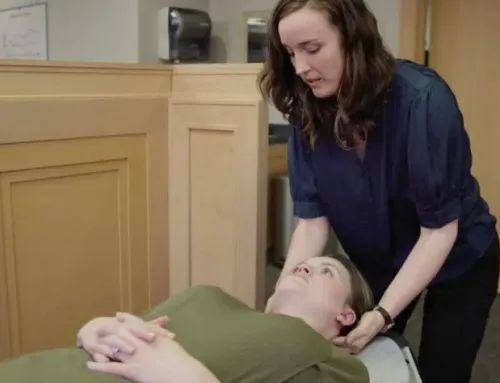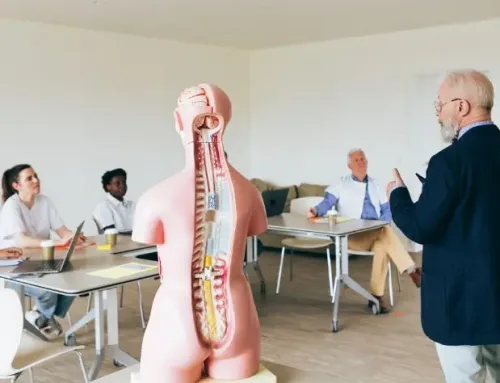Top Chiropractic Schools in the US: Integrative Health, Flexible Learning Paths & Board Exam Pass Rates

Top chiropractic schools in the U.S. are evolving fast, integrating holistic health philosophies, offering flexible learning formats, and prioritizing strong board exam preparation. As the demand for patient-centered care grows, chiropractic programs are responding with forward-thinking curricula designed to prepare students for a changing healthcare landscape.
But choosing a chiropractic school involves more than academics. It’s about clinical opportunities, mentorship, licensure outcomes, and the kind of support you’ll receive from day one through graduation. If you’re considering a career in chiropractic care, it’s worth understanding what today’s leading programs really offer, and what to look for as you plan your path.
What Makes a Chiropractic Program Stand Out?
If you’re thinking about becoming a chiropractor, one of the biggest decisions you’ll make is where to train. With multiple programs across the country, knowing what actually defines a top chiropractic school can help you make a smart, informed choice.
Top chiropractic schools are built on strong academic foundations, but their real impact comes from what happens outside the classroom. You’ll want to look at how each school structures its clinical training, how well its graduates perform on board exams, and how effectively it supports students from admission through post-grad career planning.
Qualities of a Strong Chiropractic Program
Here are some key features to look for when comparing programs:
- CCE Accreditation – Required for licensure and a sign of quality education
- Evidence-Based, Patient-Centered Curriculum – Training rooted in science and responsive to patient needs
- Real-World Clinical Experience – Internships, rotations, and exposure to diverse patient populations
- Flexible or Hybrid Formats – Options that allow for online and in-person learning
- Interdisciplinary Education – Opportunities to explore areas like acupuncture, sports medicine, or functional medicine
- High Board Exam Pass Rates – Solid preparation for the NBCE Part I–IV exams
- Career Readiness – Business training, practice management, and job placement support
- Alumni Success – Strong outcomes and a respected reputation among employers
Whether you’re just starting your research or narrowing down your top picks, keep your long-term goals in mind. Look for programs that align with your values, support your personal strengths, and give you the tools to thrive in the evolving world of healthcare.
The 3 Top Chiropractic Schools Leading the Way in U.S. Healthcare
Choosing where to earn your Doctor of Chiropractic degree is a defining decision in your healthcare career. The right program will shape your philosophy of care, build your clinical skills, and connect you to a professional network that lasts a lifetime.
1. Southern California University of Health Sciences (SCU)
With a legacy stretching back to 1911, Southern California University of Health Sciences (SCUHS) is home to one of the nation’s most established and forward-thinking chiropractic programs—the Los Angeles College of Chiropractic (LACC). We’ve been training chiropractors for over a century, leading advancements in integrative, patient-centered healthcare.
Students at SCUHS learn through a hybrid model that combines online coursework with immersive, in-person clinical rotations. Our California campus in Whittier and our new Arizona campus in Tempe (launching January 2026—the first-ever DC program in Arizona) give students flexible options for where to study and train.
We offer degree customization and dual-degree opportunities, allowing our students to tailor their education to their interests and career goals.
Program Highlights:
- Accredited Doctor of Chiropractic program emphasizing evidence-based practice
- Options to specialize in Sports Medicine, Functional Medicine, or Eastern Medicine
- Dual-degree pathways, including Doctor of Chiropractic + Doctor of Acupuncture & Chinese Herbal Medicine
- Extensive clinical partnerships—500+ sites including VA hospitals, D1 athletic programs, and FQHCs
- Practical business and practice management training
- Fixed tuition guarantee and a wide range of scholarships and financial aid opportunities
By integrating clinical experience, business education, and holistic care, we prepare graduates to lead confidently, whether in private practice, sports medicine, or interdisciplinary healthcare.
Ready to begin your journey? Apply now or request more information to learn more about our program.
2. National University of Health Sciences (NUHS) – Lombard, Illinois
Founded in 1906, the National University of Health Sciences has earned a reputation for academic rigor and leadership in integrative health education. The program’s strong emphasis on the basic sciences and diagnostic imaging prepares students to think critically and diagnose with precision. Located near Chicago, NUHS offers students exposure to a variety of healthcare settings and populations.
3. University of Bridgeport School of Chiropractic (UBSC) – Bridgeport, Connecticut
The University of Bridgeport School of Chiropractic stands out as the first university-based chiropractic program in the United States. Known for blending foundational sciences with clinical application, UBSC emphasizes evidence-based practice and interdisciplinary collaboration.
Students benefit from small class sizes, access to extensive research opportunities, and close faculty mentorship. The program’s integration with other health science disciplines on campus creates a supportive learning environment for those pursuing chiropractic within a larger healthcare context.
Board Exam Pass Rates: Why They Matter
When you’re evaluating chiropractic schools, there’s one metric that cuts through marketing and speaks directly to outcomes: board exam pass rates. These scores give you a real-world indicator of how well a program prepares its students—not just academically, but for actual licensure. Passing the National Board of Chiropractic Examiners (NBCE) exams is required to become a licensed chiropractor in nearly every U.S. state.
These exams are essential for your future. Strong pass rates reflect a school’s commitment to quality instruction, student support, and clinical preparation. They also show how well students transition from classroom to clinic to professional practice.
What the NBCE Exams Include—and Why They Matter
The NBCE exams are divided into several parts that align with key phases of your education:
- Part I – Basic sciences (anatomy, physiology, pathology, chemistry, microbiology)
- Part II – Clinical sciences and diagnostic skills
- Part III – Case management and clinical decision-making
- Part IV – Practical, hands-on clinical exam with patient scenarios
- Physiotherapy Exam – Covers modalities, rehab, and therapeutic procedures
Each section tests different layers of your knowledge and your ability to apply what you’ve learned in real clinical situations.
What Drives a High Pass Rate?
Not all schools prepare students the same way. High pass rates are often the result of a program’s academic design, faculty quality, and the level of support students receive throughout their training. If you’re serious about passing on your first attempt—and starting your career on strong footing—these are the things to look for:
- Rigor and structure of the core curriculum
- Experienced, board-savvy faculty
- Access to dedicated test prep resources and review support
- Early and consistent clinical training
- Emphasis on diagnostic reasoning and patient-centered care
Well-structured programs make board preparation an integrated part of the student journey.
Admissions Requirements for Top Chiropractic Schools
Before you begin your chiropractic education, you’ll need to meet some foundational admissions requirements. These vary slightly from school to school, but there’s a consistent baseline you’ll find across most top chiropractic programs. These requirements ensure that students are academically prepared for the scientific and clinical rigor of a Doctor of Chiropractic degree.
Whether you’re coming in with a completed bachelor’s degree or still working on your undergraduate credits, there are multiple pathways available.
Common Admissions Criteria Across Chiropractic Schools
Most accredited chiropractic schools in the U.S. require the following:
- A minimum of 90 semester credits from an accredited institution
- Prerequisite coursework in Anatomy & Physiology and Chemistry (typically 6 semester credits each)
- A GPA requirement of 2.75–3.0 or higher
- A personal interview and/or statement of purpose
- Demonstrated ability to meet the physical and academic demands of the program
Schools may also request official transcripts, letters of recommendation, and confirmation that prerequisite science courses were completed within the last seven years.
Admissions Pathways at SCUHS
At SCUHS, we recognize that every student’s journey is different. That’s why we offer three admissions tracks into our Doctor of Chiropractic program—each designed to match a student’s academic background and progress.
Track 1: The Bachelor’s Degree Pathway
- Bachelor’s degree from an accredited institution
- 6 credits in Anatomy & Physiology and Chemistry with a grade of C or better, taken within the last seven years
Track 2: The 3.00 GPA Pathway Without a Bachelor’s Degree
- At least 90 semester credits with a cumulative GPA of 3.00 or higher
- 6 credits in Anatomy & Physiology and Chemistry with a grade of C or better, taken within the last seven years
Track 3: The 2.75 GPA Pathway Without a Bachelor’s Degree
- At least 90 semester credits and a GPA between 2.75 and 2.99
- A minimum of 24 credits in life and/or physical sciences
- 6 credits in Anatomy & Physiology and Chemistry with a grade of C or better, taken within the last seven years
All applicants also complete a successful admission interview and must meet the physical and technical standards required to participate fully in the program.
Students missing prerequisites can take advantage of Accelerated Science courses to stay on track.
Your Next Step Toward a Chiropractic Career Starts Here
Top chiropractic schools are built to prepare students for clinical excellence, licensure success, and real-world impact. Understanding admissions requirements—like GPA, prerequisites, and credit minimums—can help you choose the program that best fits your goals and your academic background. And with multiple admissions tracks available, there’s more than one path to get there.
At SCUHS, we’ve built admissions tracks that meet you where you are and help get you where you want to go. Apply now to start your application or request information and explore the path that’s right for you.
FAQs
What are the basic admission requirements for most chiropractic programs?
Most programs require a minimum of 90 semester credits, including science prerequisites like anatomy, physiology, and chemistry. Some schools also expect a GPA between 2.75 and 3.0, along with an interview or statement of purpose. Requirements can vary slightly, so it’s worth checking each school’s admissions criteria to see how your academic background aligns.
Can I apply to chiropractic school without a bachelor’s degree?
Yes, many chiropractic programs allow students to apply with at least 90 qualifying semester credits, even if they haven’t yet earned a bachelor’s degree. Some schools even offer a dual-degree pathway where you can earn your bachelor’s while completing your Doctor of Chiropractic, streamlining your education and saving time.
Do top chiropractic schools have higher GPA requirements?
Most top chiropractic schools look for a GPA of at least 3.0, though some will consider students with a GPA as low as 2.75 if they have a strong foundation in science and meet other qualifications. It’s a good idea to review specific program tracks and speak with admissions advisors if your GPA is on the edge.
What kind of prerequisites do I need before applying?
You’ll usually need around 6 semester credits each in Anatomy & Physiology and Chemistry, completed with a grade of C or higher. These courses help prepare you for the clinical and biomedical focus of chiropractic education. Some programs may also accept equivalent life or physical sciences as part of your prerequisites.
What GPA do I need to get into SCUHS’ Doctor of Chiropractic program?
It depends on your pathway. If you’re applying without a bachelor’s, we offer two routes: one for students with a 3.00 GPA or higher, and another for students with a GPA between 2.75 and 2.99 who also meet science credit minimums. We look at the full picture of your academic readiness—not just your GPA.
What happens if I’m missing science prerequisites?
If you’re missing credits in Anatomy & Physiology or Chemistry, we offer Accelerated Science courses that help you meet the requirements quickly and efficiently. These are designed to get you qualified and ready for the DC program without delaying your enrollment or graduation timeline.
Related Posts




